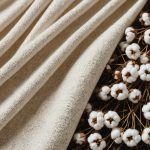Overview of Sustainable Fabrics for Summer Comfort
As the world embraces sustainable fabrics, the fashion industry is prioritising eco-friendly materials for summer clothing. Breathability is crucial for maintaining comfort in hot weather. These fabrics often excel in moisture-wicking capabilities, ensuring wearers stay dry and comfortable. Sustainable fabrics like organic cotton and bamboo have gained popularity for their light, breathable nature. Fabrics derived from natural fibers not only promote comfort but also help reduce environmental impact by decreasing reliance on synthetic materials.
The environmental impact of fashion is significant. Conventional production processes often involve harmful chemicals, excessive water usage, and generate substantial waste. Sustainable fabrics offer a more responsible alternative, mitigating these issues by employing renewable resources and environmentally friendly practices. As consumers become more aware of fashion’s ecological footprint, the demand for sustainable options in summer clothing is growing.
Have you seen this : Crafting the Perfect Look: How to Style Your Embellished Clutch with a Formal Gown
Prioritising sustainable fabrics for summer wear not only enhances comfort but also supports a more sustainable future. By choosing materials that offer breathability and moisture-wicking properties, individuals can enjoy their summer wardrobe without compromising ecological integrity. This trend reflects a broader shift towards more eco-conscious consumer behaviour.
Top Sustainable Fabrics for Staying Cool
Choosing the best fabrics for staying cool involves prioritising breathable materials that are also eco-friendly textiles. These options ensure both comfort and a reduced environmental footprint.
Also read : Essential Strategies to Avoid Chafing in Scorching Heat: Your Ultimate Guide!
Organic Cotton
Organic cotton is celebrated for its softness and excellent breathability. Unlike conventional cotton, it is grown without harmful pesticides, making it more sustainable. This approach results in a healthier ecosystem and benefits cotton farmers with safer working conditions and higher-quality yields. The simplicity of organic cotton allows it to remain a desirable choice for sensitive skin, as it is often free from the residues found in traditionally farmed cotton.
Linen
Known for its natural moisture-wicking capabilities, linen is perfect for humid conditions. It remains cool to the touch and is derived from the flax plant, which requires minimal water and no pesticides. Linen’s environmental benefits are significant, given that it is biodegradable and has a long lifespan, meaning less frequent replacement and reduced waste.
Tencel (Lyocell)
Tencel boasts breathability and is gentle on the skin. Its production involves a closed-loop process where solvents are recycled, demonstrating its commitment to sustainability. Versatile, Tencel is often incorporated into various clothing styles, from casual wear to professional attire, offering both fashion and function.
Comparing Fabric Properties for Summer
Choosing the right summer fabrics involves considering several key factors: breathability, moisture-wicking, and sustainability. These aspects are crucial in determining how well a fabric performs in keeping you cool and comfortable in warmer weather.
Breathability is essential for summer fabrics, allowing air to circulate and preventing overheating. Fabrics like cotton and linen shine here, offering excellent airflow. However, they may lack in moisture-wicking, potentially leaving sweat to linger. On the other hand, synthetic fabrics like polyester excel in wicking moisture away but aren’t as breathable.
Sustainability is increasingly important in fabric comparison. Natural fibres such as cotton and linen are generally more eco-friendly, though conventional cotton production can be resource-intensive. Bamboo and hemp are noteworthy for their lower environmental impact, making them great sustainable alternatives.
Considering activity levels is also part of the fabric comparison process. For high-intensity activities, prioritise moisture-wicking fabrics like polyester blends to manage sweat. For more leisurely activities, breathable and sustainable options like organic cotton are recommended to remain comfortable and environmentally conscious. Thus, choosing the right summer fabric inevitably means balancing these properties to suit individual needs.
Styling Tips for Sustainable Summer Fashion
Embracing sustainable styling during summer doesn’t mean sacrificing style. Focus on comfort and practicality with recommended cuts like loose fits, A-line dresses, and wide-leg trousers. These styles allow airflow, keeping you cool even on the hottest days. Layering becomes easy and stylish when choosing lightweight, breathable fabrics such as organic cotton or linen.
When considering outfit ideas, think of versatile layers that can transition from day to night. Light cardigans or shawls can add an extra dimension to your summer fashion, offering both style and function. Opt for sustainable materials—such as recycled polyester—to align with eco-conscious clothing choices.
To further accentuate your outfits, use accessories strategically. A statement necklace or eco-friendly sunglasses can elevate a simple look. Play with bright colors like coral or teal to add vibrancy, yet stay mindful of selecting natural dyes or eco-friendly processes. In summer fashion, it’s the details that truly enhance an ensemble. Small choices in accessories and color can make a big impact, ensuring you look and feel great while being kind to the planet.
Recommended Brands and Resources
Exploring sustainable fashion brands for your summer wardrobe is a smart choice. With a greater focus on eco-friendly shopping, many brands cater specifically to sustainable clothing. Notable examples include Patagonia, known for their environmental advocacy, and Eileen Fisher, which emphasizes recycled materials. For those keen on summer styles, brands like Amour Vert and Reformation offer seasonal lines focusing on sustainability without compromising on fashion.
When it comes to purchasing sustainable fabrics, several resources can guide you. Websites like The Ethical Fashion Guide provide comprehensive overviews of eco-friendly shopping options. Additionally, Fabric.com offers a selection specializing in organic and recycled materials, perfect for creating conscious clothing pieces.
To better understand and evaluate your options, accessing guides and reviews on sustainable fashion is invaluable. Platforms such as Good On You rate brands based on their impact on people, the planet, and animals. Similarly, Ethical Consumer delivers in-depth reviews, ensuring you make informed decisions. Whether you’re updating your look or starting from scratch, these resources empower you to support sustainable clothing initiatives.











